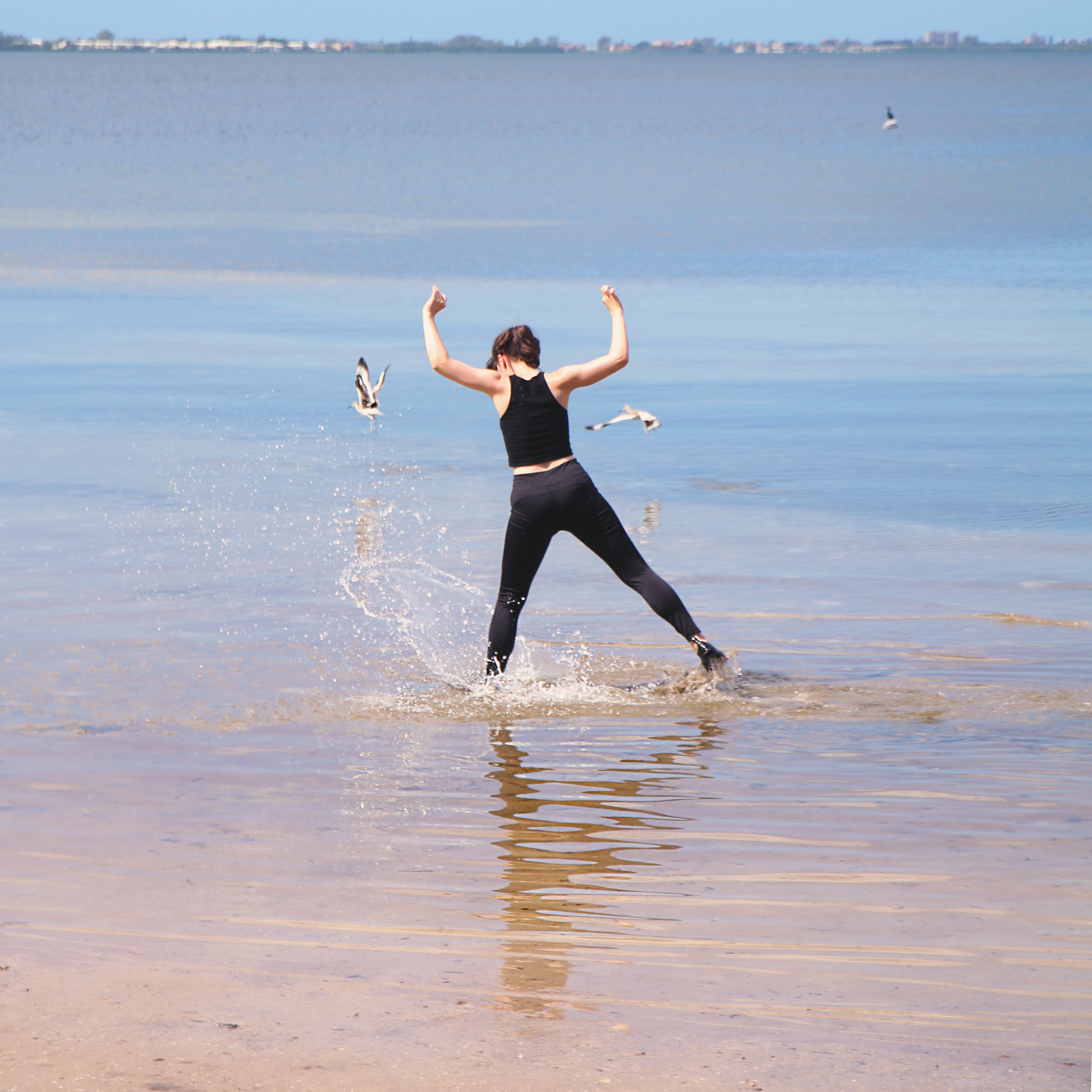WAKE: Living With/In Disaster
Historic Caples Waterfront, 2018
Personal Credits: Director, curator, choreographer, writer, designer
A video recording of my talk on WAKE at the Time Sifters Archaeological Society
Personal Credits: Director, curator, choreographer, writer, designer
A video recording of my talk on WAKE at the Time Sifters Archaeological Society
WAKE: Living With/In Disaster is a 4-part performance exhibition about hurricanes, cultural memory, and encouraging resiliency in the present through the lens of the past. As an investigation into how an ecological theater has the unique ability to interpret the anthropological heritage of climate change, WAKE uses multi-media installations, alongside the live performance of real memories from hurricanes Irma (2017), Katrina (2008), and the Great Okeechobee Hurricane (1928), to provoke intensely personal memories of hurricane survival in a coastal Florida community. WAKE was performed twice, once at low tide and once at high tide, on February 28, 2018.
Performers: Jada Bennett, Sofia Jimenez, Eugenia Titterington
Photographers: Greg Cruz, Jacob Ceciro, Tristen Johns, Bree Nieves
Performers: Jada Bennett, Sofia Jimenez, Eugenia Titterington
Photographers: Greg Cruz, Jacob Ceciro, Tristen Johns, Bree Nieves
Performing Disaster
How do you present the inheritance of climate change? Making the argument for an ecological theater having the unique ability to interpret climate justice to the public, WAKE presented three stories of hurricane survivors through time: Hurricane Irma (2017), Hurricane Katrina (2008), and the Great Okeechobee Hurricane (1928). Together, the oral histories painted pictures of ecological disparity, and presented a coastal Florida audience the opportunity to reflect on their own experiences and how they might be able to mitigate disaster within their community.
How do you present the inheritance of climate change? Making the argument for an ecological theater having the unique ability to interpret climate justice to the public, WAKE presented three stories of hurricane survivors through time: Hurricane Irma (2017), Hurricane Katrina (2008), and the Great Okeechobee Hurricane (1928). Together, the oral histories painted pictures of ecological disparity, and presented a coastal Florida audience the opportunity to reflect on their own experiences and how they might be able to mitigate disaster within their community.











Accounts of Disaster
An audio exhibit highlighting hurricane survivor testimony from interviews conducted in the research process. The speakers are survivors of Irma, Maria and Katrina. Their interviews were recorded and played over emergency crank radios.
An audio exhibit highlighting hurricane survivor testimony from interviews conducted in the research process. The speakers are survivors of Irma, Maria and Katrina. Their interviews were recorded and played over emergency crank radios.
Artifacts of Disaster
Active on-site documentation of hurricane memories. Audience members were encouraged to write down their memories of hurricane experiences, then tack them onto an artifact of disaster present in the exhibition space. These artifacts included hurricane debris I collected from my neighborhood after Hurricane Irma, like fence posts, mailboxes, playground ladders, roof shingles, and more. Notes accumulated over the course of the exhibition to create a three dimensional archive of communal disaster memory.
Active on-site documentation of hurricane memories. Audience members were encouraged to write down their memories of hurricane experiences, then tack them onto an artifact of disaster present in the exhibition space. These artifacts included hurricane debris I collected from my neighborhood after Hurricane Irma, like fence posts, mailboxes, playground ladders, roof shingles, and more. Notes accumulated over the course of the exhibition to create a three dimensional archive of communal disaster memory.
Response to Disaster
The third exhibit was dedicated to collecting donations for the Mutual Aid Disaster Relief nonprofit, members of which were among the first responders in Puerto Rico after Hurricane Maria. At the time of the performance in February 2018, they were preparing another relief trip to Puerto Rico.
The third exhibit was dedicated to collecting donations for the Mutual Aid Disaster Relief nonprofit, members of which were among the first responders in Puerto Rico after Hurricane Maria. At the time of the performance in February 2018, they were preparing another relief trip to Puerto Rico.
